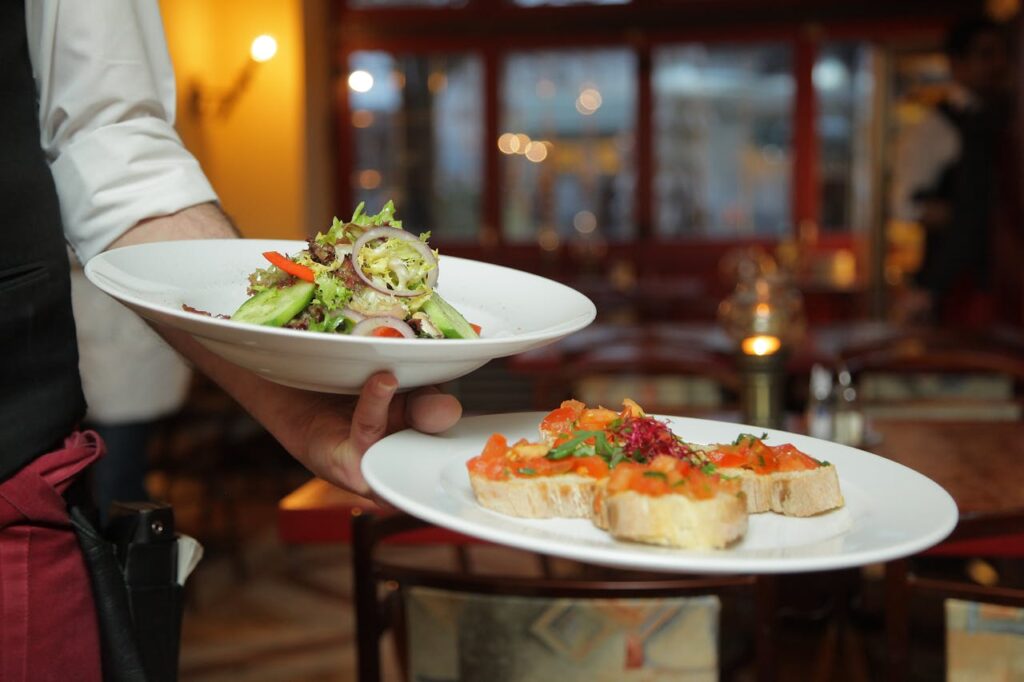
If you’re a keen cook, or already work in the restaurant business then starting your own venture might be your ultimate goal. Having the freedom to create something incredible from scratch and bring all of your ideas to life can be such a dream, but you’ll already be well aware that running a restaurant business isnt for the faint hearted. You have so many rules and regulations to follow to be compliant, as well as deal with potentially tricky customers at times. You have to source great ingredients for the right prices, manage stock, staff and so much more. It’s a lot of hard work, however it’s so worth it if this is your life’s ambition. Here are 10 essential tips to help you start and run a thriving restaurant.
1. Keep Your Kitchen Clean
A clean kitchen should be one of your very top priorities as a restaurant owner. Many restaurants choose to hire third party cleaning services to help manage the cleaning workload, especially during after hours or for deep cleaning tasks that require more time and attention. This can be a practical solution, as it allows you to focus on running the business while making sure that cleanliness standards are met.
2. Train Your Staff Well
Your staff are what will keep your business running, so spend time in the recruitment and hiring stages to get the best people for each job. Make sure your staff knows how to handle customer requests, deal with complaints, and follow food safety practices.
3. Design a Simple, Effective Menu
Creating the menu can be one of the most exciting parts of running your own restaurant, you might have had ideas for years about the kinds of things you want to serve. But this is one area you need to get right, consider things like the costs of ingredients and how much you’ll need to charge to make money on a particular dish. If for example you’re running a restaurant with middle of the road prices to suit the customer base, having a very luxurious and expensive dish on the menu might not sell. You also need to consider the time and skill needed for your chefs to prepare each dish, especially when other things are on the menu too. Make sure your menu is suited to your customer bases’ preferences and can be priced correctly too. A more simple menu selling good quality dishes that can be perfectly executed each time is better than something overly complicated.
4. Stay on Top of Inventory
Managing your inventory is one of the best ways to control costs and reduce waste. Keep track of what you have, what you need, and what’s running low. This will help you avoid overordering or running out of ingredients. Keeping on top of inventory can also prevent health and safety issues where you’re losing track of what you have and letting it spoil.
5. Follow Local Health and Safety Regulations
Complying with local laws and health regulations is essential. Make sure your restaurant follows food safety standards and maintains equipment like grease traps. This will help avoid fines and prevent any disruptions to your service. There are companies that specifically offer grease trap cleaning that help you to stay compliant.
6. Focus on Customer Experience
When people go to a restaurant, they’re not just after good food. It’s the whole experience, they want to feel welcomed and valued. They spend money knowing they’ll be getting something a bit different to just eating at home so bear this in mind. Train your staff to offer friendly service and address any needs that the customer has quickly. Some customers can be difficult, unfortunately there are people out there that want something for nothing and will complain even if you havent done anything wrong. Have some systems in place for when this happen and make sure your staff are briefed and know what to do to calmly resolve the situation.
7. Optimize Your Kitchen Layout
Your kitchen should be designed for a smooth workflow, with everything your chefs need within reach. This will help speed up food prep and reduce mistakes during busy hours. If you’re designing your kitchen from scratch then work with an experienced designer who knows how commercial kitchens work. If you’re making use of an existing kitchen when you move into your premises, spend a bit of time planning and figuring out where things will go to make the most use of it.
8. Have a Clear Marketing Plan
Restaurants are a difficult business to crack, there’s lots of competition. For any business to stand out you need a solid marketing plan, but even more so as a new restaurant. Work with a marketing agency who knows what they’re doing, utilise social media and work on creating an incredible website with quick and easy booking systems.
9. Manage Your Finances Carefully
Keeping track of your money is key to running a successful restaurant. Set a budget and regularly check your cash flow to make sure you’re not overspending. Pay close attention to costs like food, staff wages and utilities as its so easy to overlook small expenses, but they add up quickly. Using simple tools or business software to manage your finances can help you stay on top of things. Also, review your budget regularly and adjust it as needed, especially when things like ingredient prices change or if you notice certain costs going up. If you have good financial management it will keep your restaurant running smoothly and help you avoid nasty surprises.
10. Adapt to Change
The restaurant industry is constantly changing– customer preferences shift, new food trends crop up and technology evolves. Stay open to feedback from customers and employees, and be willing to adapt. This could mean adjusting your menu, offering delivery service or updating your marketing strategy. But this flexibility will help your restaurant to stay relevant.



